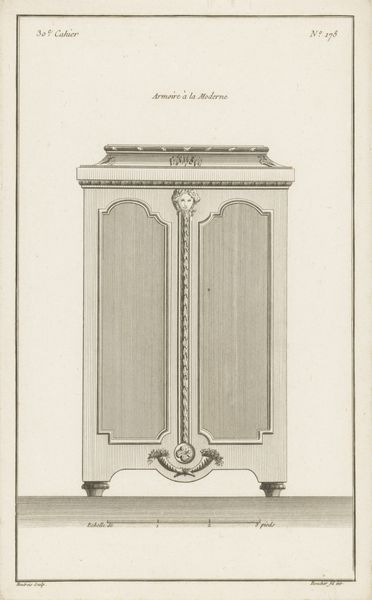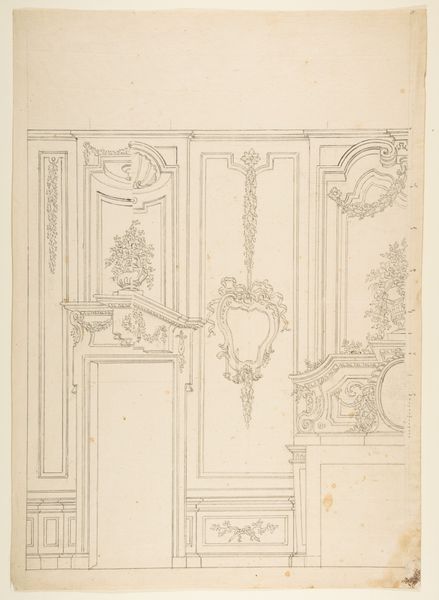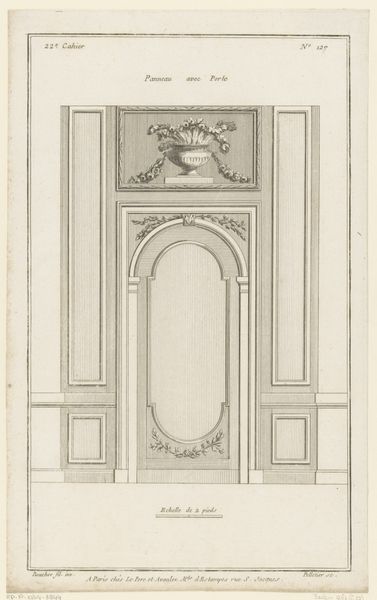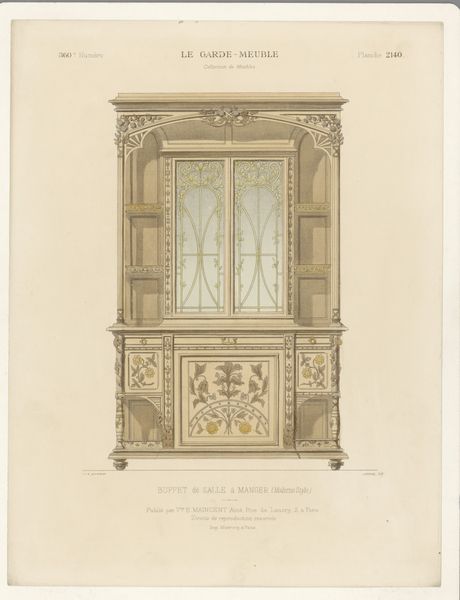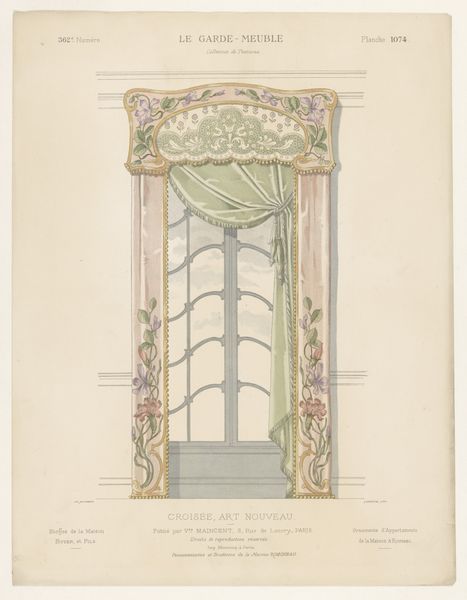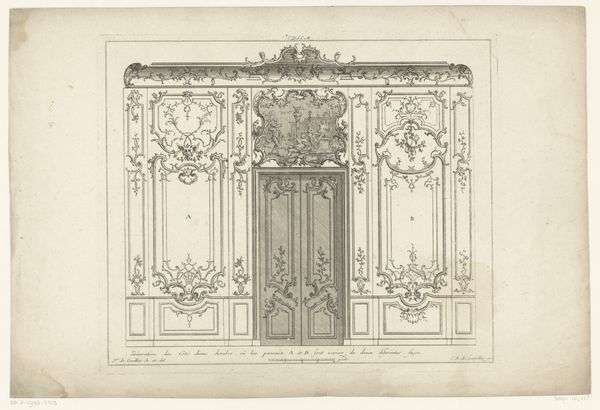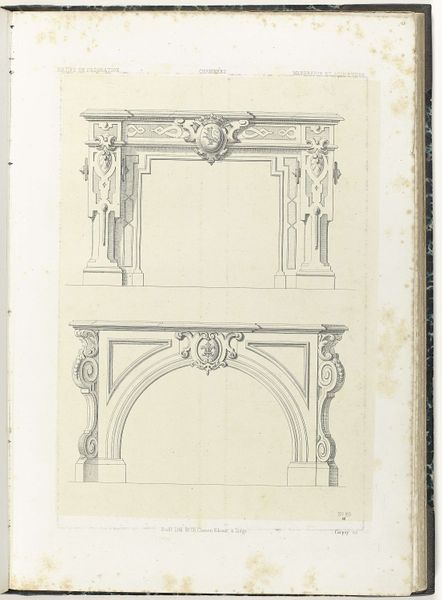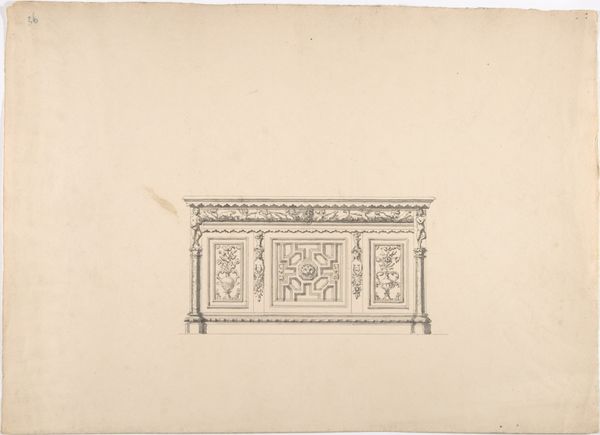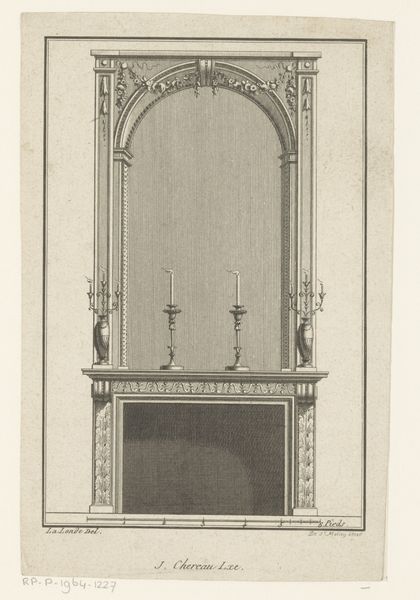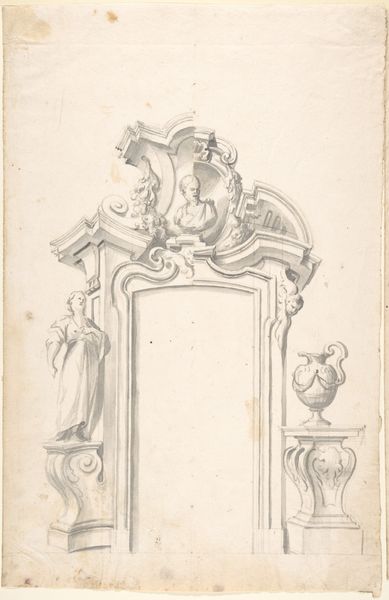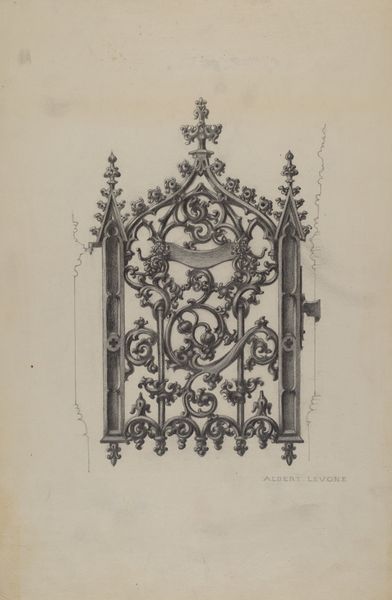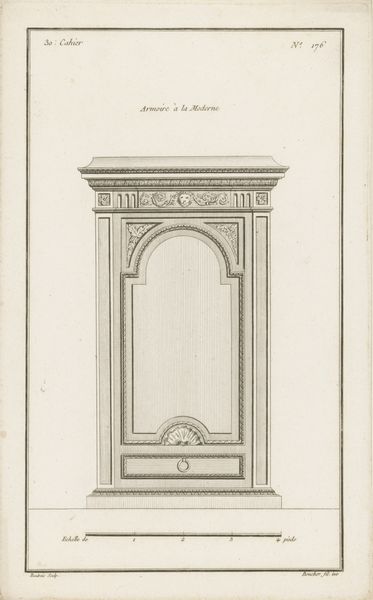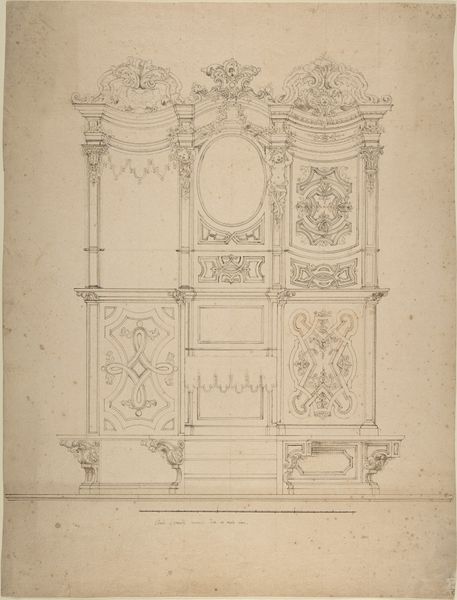
Design for Rococco-style wall and cove ornament in the salon of the Hotel de Luynes, owned by the Duc de Sabran 1850 - 1900
0:00
0:00
Dimensions: Overall: 14 5/16 x 10 1/2 in. (36.4 x 26.7 cm)
Copyright: Public Domain
Editor: So, this drawing, "Design for Rococco-style wall and cove ornament in the salon of the Hotel de Luynes," likely created between 1850 and 1900 by Jules-Edmond-Charles Lachaise, strikes me as incredibly opulent. What's your interpretation of this piece, especially regarding its historical context? Curator: It’s not just about opulence. Consider the Rococo style itself - born out of the aristocratic rejection of Louis XIV's rigid Baroque. Rococo embraced asymmetry, lightness, and personal pleasure, which are coded visual symbols of freedom from constraints imposed by authoritarian power. Who do you think was experiencing that sense of 'freedom' at that moment in history? Editor: I suppose it catered to the elite, those with the means to commission such extravagant designs, basically excluding anyone outside of aristocratic circles. Curator: Exactly. Now think about what these visual choices signify. The Rococo style served to reinforce the separation between social classes by materializing distinctions, visually signifying their dominance. How do the materials and decorative elements, presented in this drawing, play into solidifying existing power structures and perhaps challenging those emerging in 1850-1900? Editor: So, beyond just being pretty, the artwork encodes inequalities. Curator: Precisely. And understanding that power dynamic is key to deconstructing and critiquing these representations today. Are the ornate forms meant to conceal the vast economic divide that supported their creation? Editor: That makes you reconsider it all. What looks decorative, turns out to be deeply political. Curator: Exactly, by considering the social implications and who this art *served*, we understand its lasting influence and how these visual languages continue to shape our environments. Editor: It is empowering to see how visual design has impacts outside just pure aesthetics.
Comments
No comments
Be the first to comment and join the conversation on the ultimate creative platform.
